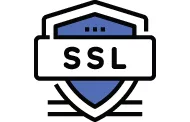What is SSL Certificate Not Trusted Error? How to Fix ERR_SSL_PROTOCOL_ERROR?
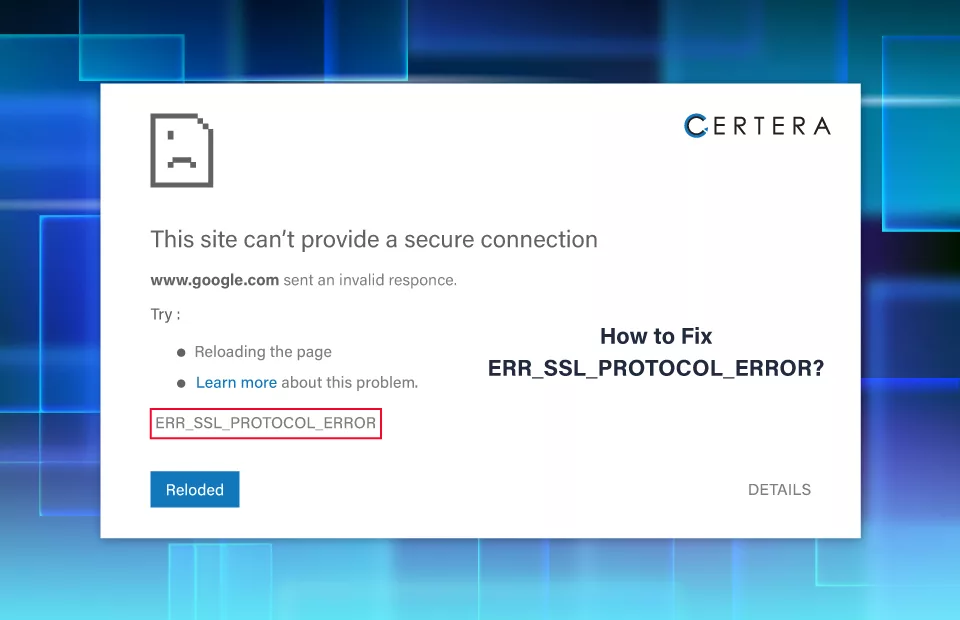
In this tutorial, we present the various steps you can take to fix SSL certificate not trusted errors and get your site back up and running securely. Let’s begin!
The “SSL certificate not trusted” error typically occurs when the SSL certificate installed on a website fails to be recognized by the visitor’s browser as coming from a trustworthy source, despite being otherwise valid.
SSL certificates are an essential security technology that encrypts data between a website and visitors’ browsers to secure sensitive information such as payment details and passwords.
Visitors can feel more secure when a website encrypts data using SSL certificates. Such encrypted sites are identifiable by the HTTPS in their URLs and the padlock icon in the address bar.
Troy Hunt has established whynohttps.com, which ranks the top 100 websites that load via an unsecured connection rather than instantly switching to a safe, encrypted one.
As an owner, you can always prevent yourself from being listed as one of the unsecured pages to be browsed. So, ensure that an SSL certificate is correctly installed and receive trust from visitors’ browsers.
A typical “ERR_SSL_PROTOCOL_ERROR” on the proclaimed Google Chrome looks like this:
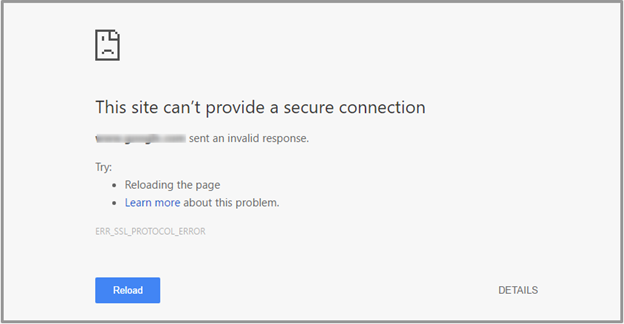
How to Resolve ERR_SSL_PROTOCOL_ERROR?
This section will explore some essential steps to optimize your system’s performance and enhance its security.
METHOD 1: Remove SSL State
Clearing the SSL state can sometimes resolve SSL-related issues. Follow these steps to clear it:
- Go to Start Menu and click Control Panel.
- Select the Network and Internet and go to Network, then Sharing Center.
- Click on “Internet Options” in the bottom left corner of the page.
- In the Internet Properties window, navigate to the “Content” tab and click “Clear SSL State.”
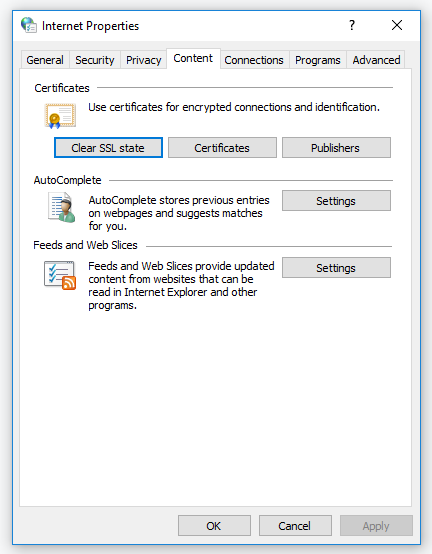
METHOD 2: Set the Correct System Date, Time & Region
Setting the correct date, time, and region is vital to ensure accurate functioning and synchronization of your system. Incorrect settings can lead to various issues with applications and network connections.
If you’re unfamiliar with the philosophical principle “Ockham’s Razor,” it might be intriguing to Google it in your free time. Before proceeding with the following steps, double-check your system’s date and time settings to avoid potential problems.
METHOD 3: Disable Security Tools Temporarily
Windows Firewall and Antivirus software can occasionally interfere with SSL connections.
Attempt to disable them and check if the error persists temporarily for fixing the ERR_BAD_SSL_CLIENT_AUTH_CERT Error.
METHOD 4: Try Removing the Hosts File of your System
If the host’s file is causing conflicts, removing it might help. Here’s how you can do it:
- Press the Windows logo key + R to open the Run dialog box.
- Type C:\Windows\System32\drivers\etc in the search space and press Enter.
- Locate the “hosts” file, right-click, and select “Delete.”
METHOD 5: Attempt Clearing Chrome’s Cache and Cookies
To maintain optimal browser performance and security, periodically clearing Chrome’s cache and cookies is essential. Follow these simple steps to accomplish this task:
- Press Ctrl + Shift + Delete simultaneously. This will open the “Clear browsing data” window.
- Choose the time range to clear the data (e.g., the last hour, day, week, or all time).
- Select the data types you want to clear, such as cache, cookies, and browsing history.
- Click “Clear data” to complete the process.
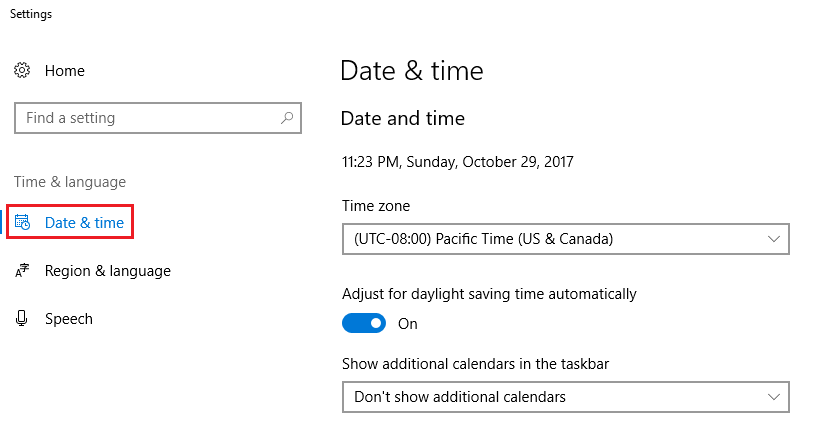
Doing this regularly reduces the risk of potential infections and improves your browser’s overall performance.
METHOD 6: Lower Internet Security and Privacy Level
High-security settings might prevent you from accessing specific sites. To lower these settings, proceed as follows:
- Go to Start Menu and pick the “Control Panel” option.
- Click “Network and Internet” and then “Network” and “Sharing Center.”
- Select the “Internet Options” button in the bottom left corner of the page.
- In the Internet Properties window, navigate to the “Security” tab and set the security level to “Medium.”
- Similarly, set the privacy level to “Medium” in the Privacy tab.
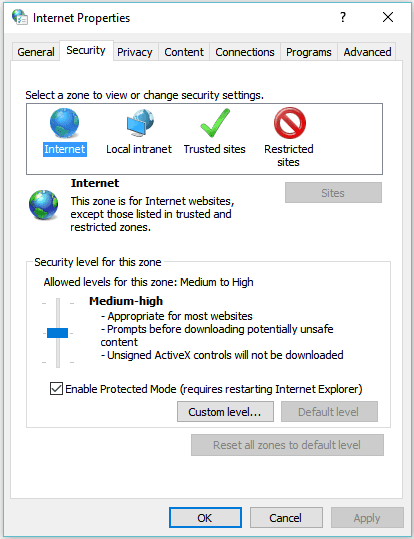
QUICK NOTE: Lowering security and privacy levels comes with risks, so be cautious and do this at your discretion.
METHOD 7: Process to Disable QUIC Protocol
If you frequently encounter errors related to the QUIC protocol in Google Chrome, you can disable it by following these simple steps:
- Open Google Chrome and type “chrome://flags/#enable-quic” in the address bar.
- Press Enter to access the experimental features page.
- Locate the “Experimental QUIC Protocol” setting.
- If it is set to “Default” or “Enabled,” change it to “Disabled.”
- Scroll down to the bottom of the page and click on “Relaunch Now” to apply the changes.
- Disabling the QUIC protocol can help resolve connection-related issues and ensure a smoother browsing experience.
METHOD 8: Try Disabling the Extensions
Extensions can be beneficial but may also be responsible for specific errors, such as the ERR_SSL_PROTOCOL_ERROR. Follow these steps to identify and disable problematic extensions:
- Open Google Chrome and click on the three-dot menu in the top-right corner.
- Go to “More tools” and select “Extensions” from the submenu.
- Disable extensions one by one by toggling the switch next to each extension.
- After disabling an extension, test if the error persists. Repeat this process until you identify the problematic extension.
